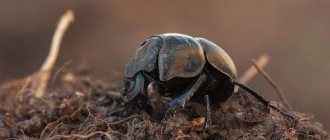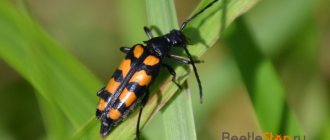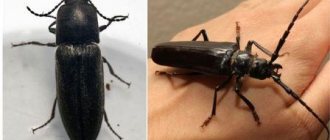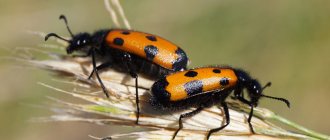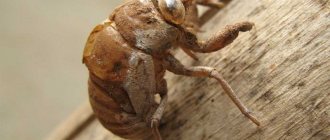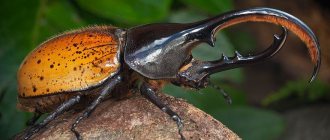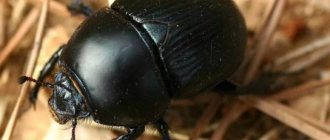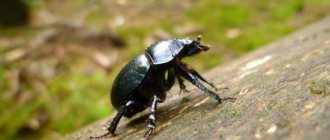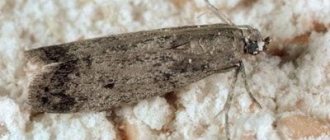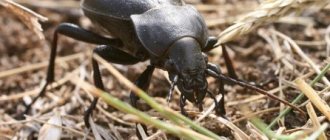Green bugs
It is the green beetles on lilacs that primarily attract attention. This is not the most numerous category, but the most visible. Especially considering that these pests love bright white flowers. There are the most common beetles.
This is a beetle, a representative of the blister family. It has a long body with a bronze or blue sheen, dark legs and soft wings. The defense mechanism is the terrible smell between decaying carrion and rat excrement. One option for protecting plantings is manual collection. But due to the toxicity, it is necessary to carry out the procedure with gloves and then wash your hands well with soap. Before flowering begins, chemicals are used to protect the inflorescences.
Greenish bugs that are small in size. The body is narrow, elongated, covered with emerald scales. In the spring, the green elephant pest emerges from its hibernation sites and actively eats young foliage. They prefer birch, olives, and lilacs. An oblong beetle with a powerful proboscis feeds on various plants. To prevent infection, it is necessary to use trapping belts, shake off and manually collect in the spring. It is also necessary to trim and clean trunks and remove diseased and damaged parts.
These are one of the greatest aesthetes among pest beetles. They really love light flowers, which are very juicy. In some years they can destroy flowers en masse. Most members of the family are green. The larvae are not pests; they live in tree trunks or rotten stumps. The adults themselves are not dangerous to people and do not bite. In flight they make loud sounds like bombers. And if you touch them, they fall, pretending to be dead.
Description of species
Bronze beetles are beetles from the lamellar family. Many species in this group are brightly colored and also have a metallic sheen. This insect is often confused with the common cockchafer. Known types of bronzes: golden, copper, green.
Golden bronze
This is a fairly large beetle. Its oblong, oval body can reach 22.5 mm in length. The upper part of the body is most often covered with hairs, but completely naked individuals are also found. When examining the bronze from above, the golden-green color is clearly visualized. Entomologists also note the presence of a copper-red tint with a metallic sheen.
The beetle's diet includes flowers of wild or cultivated plants. But at the same time, golden bronze usually does not cause serious harm to gardening.
Copper bronze
This is a beetle whose body length reaches 16-25 mm. The body is narrow, slightly convex and slightly narrowed backward. The head is covered with numerous large dots. The upper side of the body is smooth, shiny with an emerald, bluish, olive or reddish-greenish tint. The head is relatively light with a copper-violet tint.
Green bronze
Insects are divided into large and small. The large green bronze beetle is listed in the Red Book of the Russian Federation. The body of the green lesser bronze reaches a length of 18-20 mm. The pest has wings, green limbs, and elytra that resemble a shield. Insects are especially active when the sun shines brightly, and at night the ground becomes their home.
Other lilac pests
There are types of beetles and insects that like to feed on different parts of the trunk and leaves.
| Name of pests | Description |
| Leafcutter bees | They are good pollinators, but they can also cause harm. To build their nests, they use parts of cut leaves, which can harm a large number of green parts. |
| Sawflies | Some types of sawflies harm leaves. They make a lot of holes in them, which significantly reduces the tree’s immunity. |
| Bark beetles | Several species of these beetles settle on the trunks and roots of lilacs. But they usually attack already damaged plants. |
Miners
Miners are called insects whose larvae, feeding on leaf tissue, make tunnels of various shapes in the thickness of the leaf blade or growing shoot.
Of the insects that mine lilac leaves, only one species is known - the lilac moth (Gracilaria syringella). The massive flight of butterflies coincides with the flowering of lilacs. The caterpillars chew out a spot-like bubble mine under the upper skin of the leaf. Mina is light at first, then brown, and occupies most of the leaf surface.
Lilac moth
The grown caterpillars emerge from the mine and curl the top or side of the leaf. In this shelter, the caterpillars continue to feed and complete their development. The number of caterpillars in the first generation is usually small, and their damage is hardly noticeable. Catastrophic damage, often reaching 80–100% of leaves, is caused by caterpillars of the second and third generations.
In the seasonal cycle, the development of generations overlaps one another, so in nature you can find butterflies and caterpillars continuously from spring to autumn. The seasonal dynamics of the number of caterpillars is characterized by a sharp increase in the second generation, often 20–25 times (compared to the first generation). Severely damaged lilacs lose their decorative properties.
How to deal with lilac pests
The main rule for maintaining a healthy lilac is good immunity of the bush and the entire garden. Moreover, after this type of delicacy blooms, they will actively move to others.
- Timely work in the garden.
- Autumn cleaning of tree trunk circles, loosening.
Bronze on lilac.
- Feeding plants to strengthen the immune system.
- Manual collection of beetles that are inactive early in the morning or in rainy weather.
- The use of chemicals on the bushes themselves and in the tree trunk circle.
- The use of trapping belts to prevent the appearance of pests.
- Planting plants in the tree trunk that repel beetles and other pests with their scent.
Folk recipes
They are based on the effects of decoctions and infusions. They are safe for humans, cheap and easy to prepare. They help not only against various beetles, but also against moths, moths, moth caterpillars and other insects.
Sagebrush
You need 100 grams of dry herb per bucket, leave to steep for a day and strain. To spray trees, you need to dilute 1:1 with clean water.
Celandine
1 kg of dry grass is needed. Infuse for 30-36 hours in a bucket of water and strain. Spray plants with added soap
Tops
Use potato or tomato. You need 2 kg of fresh grass or 1 kg of dry grass. These proportions are used in a bucket of water and left for 4 hours.
Social structure and reproduction
Photo: Golden bronze beetle
To find a mate, beetles use their bright outfit, pheromone enzymes and growths on their antennae. They have the shape of a club made of several plates and can open like a fan. Such antennae are very sensitive and help males in finding partners. After the end of the mating relationship, the male’s life path ends.
Females lay eggs in rotten stumps, fallen trees, humus, compost, and anthills, after which they die. The larvae emerge from the white-yellow eggs after a couple of weeks and immediately begin to feed on organic plant debris, rotten leaves, rotting wood, and dead plant roots. As the larva matures, it goes through three stages through two molts.
The shape of the larva is C-shaped. The thick body is narrowed towards the head, cream-colored, its length is 4-6 cm. The head is about 3 mm, there are four teeth on the wide and short jaws. There are also teeth on the lower jaws; on the outside they are equipped with a palp. The jaws are quite powerful. Insects bite into rotting debris and grind it with their jaws, helping to process the compost.
The antennae are short and thick and consist of four segments. At the anal end there are two rows of sharp spines. The body is covered with bristles. The legs are short with appendages in the form of claws. It is difficult to move with their help.
After finishing the third instar, the larva pupates where it fed. The pupa's cocoon is oval shaped and looks like a beetle. The caterpillar creates its cocoon-cradle from soil, decaying wood, and its excrement, gluing them together with secretory fluid. It is released from the anal end of the abdomen. The larva uses its tiny legs to create a cocoon. After half a month, an adult emerges from the pupa.
Prevention from diseases
To combat diseases and pests, it is better to use preventive measures before infection occurs. You need to plant only healthy plants; for this you need to check the quality certificate from the seller. Proper care of lilacs is also very important https://floristics.info/ru/stati/sadovodstvo/3680-siren-posadka-i-ukhod-v-sadu-obrezka-i-razmnozhenie.html
Careful weeding will protect the plant from infection through them. When the leaves are initially damaged by fungal spores, the damaged branches should be trimmed. All dry and diseased branches must be cut out and discarded in a timely manner. If you remove the old bark, the scale insects will not settle
You should pay attention to the leaves; remove all curled and dried leaves.
Disease prevention is best done in the spring. There are special medications sold for fungal diseases that are very effective.
https://florasib.ru/articles/category2/14/bolezni-i-vrediteli-sireni/
https://www.greeninfo.ru/protection_plants/base_pests_and_diseases.html/Article/_/aID/5255
What damage do weevils cause to the garden?
Weevil beetles gnaw leaves and petals of woody and shrub (sometimes herbaceous) plants in the form of recesses or coves along the edges, the leaves become lacy. Occasionally, buds and young apical shoots are also damaged. Damaged leaves look unattractive, their decorative value (and the composition as a whole) decreases, but the plants remain healthy.
Damage caused by weevils
Is manual removal effective?
It makes no sense to cut down young shoots, since they will make themselves known every season as long as the root system is in the ground. Mechanical removal involves digging up the roots and sifting the soil. It is appropriate to resort to it if the bush is cut down, and new shoots systematically grow in its place.
Lilac. How to fight? Help Wanted!
Good day everyone! Yesterday my husband and I tried to fight lilacs in our garden plot. It was necessary to remove 3 large lilac bushes from a summer cottage with minimal losses for the garden and for our forces. Our bushes are very old, already dried up in the middle, and along the edge of the bush there is a lot of young growth and this growth stretches almost 3 meters from the bushes. Yesterday we tried to lime one of the bushes. First, they dug up the young growth along the edges, then broke out the branches from the middle, and then lit a fire in the place of the former bush and burned it. The effect is certainly not very good, but at least for a couple of weeks it will stop our lilacs from actively reproducing. There are a few young sections left to use new methods. The question is: How to lime the roots? And how to remove lilac bushes from under an apple tree. One is sitting right next to each other, we are still afraid to touch him. Uprooting with my hands and feet - I'm afraid my husband won't be able to do that. He tried to lime one bush for about 4 hours, but we didn’t solve the problem with the roots. I read on the Internet about herbicides such as ROUNDUP, TORNADO, HURRICANE, etc. But I’m scared for the apple tree. Who can advise?
These are the bushes we have along the fence. Some of the cherry weed was removed, leaving lilac “for dessert.”


